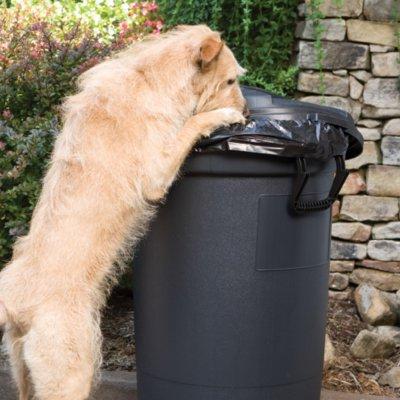 By Dr. Patrick Mahaney, VDM, CVA, CVJ
By Dr. Patrick Mahaney, VDM, CVA, CVJ
Patrick and his dog Cardiff
It’s nearly spring, which means putting away the winter coat, spending more time outside, and starting spring cleaning. Unfortunately, the labors we take to achieve a spring-clean home or yard can cause toxicity in our pets because of the harsh chemicals in many household cleaners. Make your spring a safe season by prioritizing pet health and safety.
What’s Wrong with Cleaners?
Our companion canines and felines live in a shared environment with us and are exposed to the same toxic substances we are. Cleaning products, deodorizers, fertilizers, pesticides, and other indoor and outdoor agents we apply to our home surfaces, air, and yards can potentially have mild to serious side effects for our pets.
Our pets breathe the same air we do, therefore chemicals can end up in their eyes, nose, and throat. They also explore the environment with their senses of smell and taste; they often take in substances through inquisitive sniffs and licks. Additionally, pets groom themselves with their own tongues. As a result, cleaning products on the skin and coat enter their digestive tract and blood stream with a few licks of their paws.
What Problems Can Cleaners Cause?
Single or repeat exposures have potential for short and long term negative health consequences for cats and dogs. Ingestion of or contact with cleaning products can cause a variety of health problems in pets, including:
- Ptyalism (salivation)
- Emesis (vomit)
- Diarrhea
- Anorexia (decreased appetite)
- Cough
- Sneeze
- Nasal and ocular (eye) discharge
- Lethargy
- Seizures
- Death
Clinical signs may not be evident until your pet develops metabolic disease (kidney, liver, or other organ system abnormality), cancer, or other illness. That’s why prevention is truly the best treatment.
What Chemicals Are in Common Cleaning Agents That Are Unhealthy for Pets?
Data supports our realistic speculation that our pets are being poisoned by the same toxins that are also getting into our bodies. “Polluted Pets,” published by the Environmental Working Group (EWG) in April 17, 2008, did a study of the chemicals found in the bodies of pet dogs and cats.
“Dogs and cats were contaminated with 48 of 70 chemicals tested, including 43 chemicals at higher levels than those typically found in people, according to our study of plastics and food packaging chemicals, heavy metals, fire retardants, and stain-proofing chemicals in pooled samples of blood and urine from 20 dogs and 37 cats collected at a Virginia veterinary clinic. In dogs, the average level of stain- and grease-proof coatings (perfluorchemicals) was 2.4 times higher. In cats, fire retardants (Polybrominated Diphenyl Ethers or PBDEs) were 23 times higher, and mercury was more than 5 times the amounts compared to average levels in people found in national studies conducted by the Centers for Disease Control and Prevention (CDC) and EWG. The study is the most comprehensive investigation of the chemical body burden of companion animals conducted to date, with 23 chemicals reported in pets for the first time. The results reinforce findings from prior studies showing that pets' unique behaviors may place them at risk for elevated exposures and health risks from chemicals pollutants in the home and outdoors, in air, water, food, soil and consumer products for people and pets.”
How Do I Protect My Pet?
Start by looking at the labels on cleaning products and avoid using those containing ingredients such as:
- Bleach (sodium hypochlorite)
- Formaldehyde (found in general household cleaners)
- Isopropyl alcohol
- Phenols (which are typically found in cleaners with the word "sol" in the name)
- Phlatates
- Perchloroetheylene (found in rug and carpet shampoos)
Unfortunately, there is no 100% guarantee that a cleaner, even one that is labeled as pet-safe, won’t cause any clinical signs of illness. Even ‘all natural’ products aren’t necessarily completely safe for pets. However, you can take some steps to purchase pet-safe cleaning products created with your pet’s health in mind:
- Purchase products lacking odor or known toxic components. They are less likely to cause harm on both a short and long-term basis.
- Follow all product manufacturer’s directions. Never apply cleaners directly to your pet.
- Reduce the amount of chemical fertilizers and pesticides you use on your garden or yard.
- Consult with a professional company that aims to green up your yard using agents that are pet-safe.
- Keep your pet out of potentially toxic areas, such as off the newly cleaned counter and out of the yard after it has been sprayed for pests.
If you suspect your pet has been exposed to cleaning products or other toxins, contact your veterinarian immediately. If further help is needed, two great resources for managing pet toxicities are the ASPCA Animal Poison Control Center (APCC) (888-426-4435) and the Pet Poison Helpline (800-213-6680).
How will you protect your pet this season?


